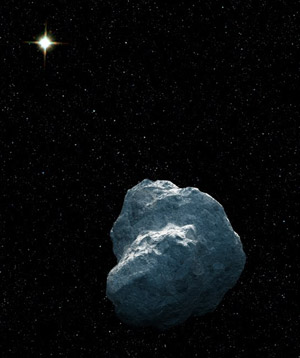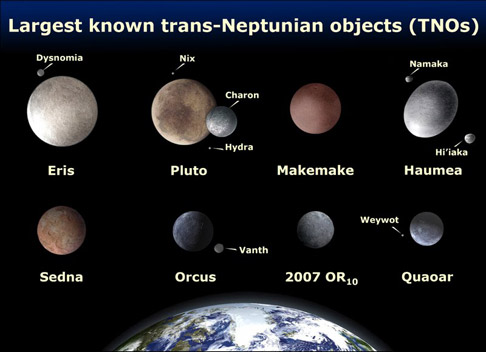But like the murky depths of the ocean, the darkness hides millions of mysterious bodies - or at least, so we think.
Known collectively as trans-Neptunian objects, or TNOs, the first of this population to be discovered was Pluto in 1930. Since then we've found a thousand or so objects in Pluto's domain. Some have even been given exotic names, such as Chaos, Ixion, Quaoar, and Rhadamanthus.
So far, two probes have ventured that deep into the solar system (that'd be Voyager 1 and 2) but neither one paid much heed to TNOs on their way farther afield.
That means astronomers using Earthly telescopes can only guess at how many bodies are out there, what they look like, and what they're made of.
Now, using archived pictures from the Hubble Space Telescope, a team of scientists has found a way to spot TNOs, and they've added 14 more to the catalog.
"Trans-Neptunian objects interest us because they are building blocks left over from the formation of the solar system," lead author Cesar Fuentes, formerly with the Harvard-Smithsonian Center for Astrophysics and now at Northern Arizona University, said in a press release.
The trick to finding them is to look for the equivalent of meteor streaks in Hubble shots of other objects.
Hubble gathers light from faint, distant objects by staring into the sky for extended periods, a process known long-exposure photography. The longer you stare, the more light you get from a given star/galaxy/supercluster you want to study.
If, by chance, an object orbits between you and your target, you'll get a streak across the frame, akin to pictures of a meteor shower.
Knowing this, Fuentes and colleagues went looking through hundreds of old Hubble shots of stuff around the ecliptic - if the sun is like the hub of a wheel, planets and other bodies, including TNOs, formed in the plane of the disk around it, and that's generally where they orbit.
By searching a little above and below this invisible line through the solar system, the team found a handful of candidate streaks, 14 of which were later proven to be new-found trans-Neptunian objects.

But wait, there may be more: TNOs tend to orbit at significant angle to the ecliptic, compared to our eight planets, so there could be hundreds of the icy bodies waiting to be found in Hubble pictures aimed even farther above and below the plane.
"We have proven our ability to detect and characterize TNOs even with data intended for completely different purposes," Fuentes said.
Meanwhile, the solar system equivalent of the Census of Marine Life is poised to answer questions about TNOs based on data direct from the source.
The New Horizons probe is even now halfway to Pluto's neighborhood, and it will spend five to ten years studying bodies in the TNO realm known as the Kuiper belt.
So stay tuned, folks, our cosmic home is about to get much more crowded!




I refer to Nibiru/phaeton. I wonder, is this another of NASA's acclimatizing us to the monster that is believed by many, to be waiting its turn to make its presence felt on this globe of ours?
I suggest reading velikovsky, also Alan and Delairs 'cataclysm 'for what may be awaiting is in the not very far future. Like the many films and the warnings of CME's in two years time, one has to ask, are we being made subtly aware of portentous events to take place very soon now? I also refer to the many deep bunkers world wide, we are reliably informed about. These things are nor done without a purpose.